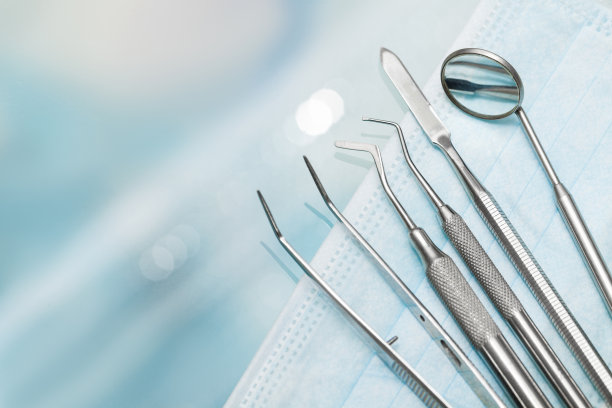Essential Guidelines to Ensure Optimal Care and Precautions During Your Dental Filling Procedure
Summary: Dental fillings are a common dental procedure that aims to restore damage caused by tooth decay, cracks, or chips. This article outlines essential guidelines to ensure the optimal care and precautions during the dental filling procedure. By addressing important aspects such as pre-procedure preparations, the procedure itself, post-procedure care, and recognizing complications, patients can have a smoother experience. Implementing these detailed measures will not only alleviate anxiety but also enhance the overall effectiveness of the dental filling, ensuring lasting results and safeguarding oral health.
1. Preparing for Your Dental Filling

Before undergoing a dental filling procedure, its crucial to have a comprehensive understanding of your oral health status. Schedule a consultation with your dentist to discuss your specific needs and concerns regarding dental fillings. This discussion will help the dentist make informed decisions about the best filling materials and techniques to use for your particular case.
Additionally, it鈥檚 advisable to gather all necessary health information before your appointment. This includes detailing any medications you鈥檙e currently taking, underlying health conditions, and allergies, particularly to numbing agents or dental materials. Such information allows the dentist to tailor their approach to your unique situation and avoid any potentially harmful interactions.
Moreover, maintaining good oral hygiene in the days leading up to your appointment can set the foundation for a successful filling procedure. Brushing, flossing, and possibly using an antibacterial mouthwash can help reduce the bacterial load and minimize the risk of infection during and after the procedure.
2. During the Dental Filling Procedure
When it鈥檚 time for the filling procedure, you will typically be seated in a comfortable dental chair. The dentist will begin by ensuring that the area around your tooth is numb to prevent any pain or discomfort during the procedure. Local anesthetics are commonly used, and it鈥檚 important to communicate any feelings of discomfort, as adjustments can be made.
During the procedure itself, the dentist will remove decayed material from your tooth and prepare the space for the filling. This step is crucial, as incomplete removal of decay can lead to further complications. The dentist may use a drill or laser, depending on the technique they choose. Its important to stay calm during this process and remember that the dental team is focused on your comfort and care.
Once the cavity is cleaned, the filling material will be applied. This can vary from composite resin to amalgam, depending on various factors such as your dental needs or aesthetic preferences. The dentist will sculpt the filling to match the natural contour of your tooth, ensuring both functional and aesthetic satisfaction.
3. Post-Procedure Care Essentials
After the filling procedure, following proper post-care guidelines is vital for ensuring optimal healing. Initially, patients may experience some sensitivity to hot or cold temperatures. This is normal and should diminish over time. However, if the sensitivity persists beyond a few weeks, it鈥檚 advisable to consult with your dentist.
For the first few hours post-procedure, it is recommended to avoid eating or drinking until the numbness completely wears off. This will help prevent biting your cheek or tongue inadvertently. Once you can feel your mouth again, start with soft foods and avoid sticky or hard items that might dislodge the filling.
Maintaining excellent oral hygiene is particularly crucial after the filling. Continue your regular brushing and flossing habits, but be gentle around the filled tooth. Your dentist may recommend special rinses or products to help minimize sensitivity and promote healing, so be sure to follow their advice closely.
4. Recognizing Complications and Follow-ups
Being aware of potential complications is equally important for ensuring a successful outcome after your dental filling. Possible signs of complications may include persistent pain, excessive sensitivity, or visible changes in the fillings integrity. If you experience any of these symptoms, contact your dentist immediately for an evaluation to prevent further issues.
Regular follow-up appointments are essential to ensure that the filling remains intact. These visits also enable your dentist to monitor your overall dental health and spot any potential issues early. Taking proactive steps can save you time, discomfort, and additional costs in the long run.
Finally, if you experience any unusual symptoms such as swelling or fever, these could indicate an infection. Promptly seeking professional advice is critical in such scenarios. Your oral health is a crucial aspect of your overall well-being, so prioritize regular check-ups and stay vigilant about any changes in your dental status.
Summary:
In conclusion, being well-prepared and informed is key to having a successful dental filling procedure. By understanding the preparatory steps, what to expect during the procedure, adhering to post-care guidelines, and recognizing potential complications, patients can significantly improve their experience and enhance their oral health. Careful attention to these essential guidelines will not only support physical healing but also foster peace of mind.
This article is compiled by Vickong Dental and the content is for reference only.


